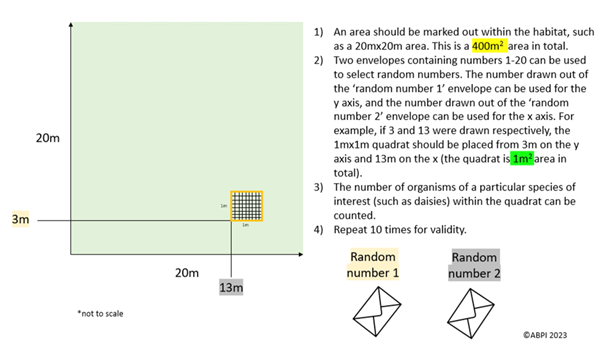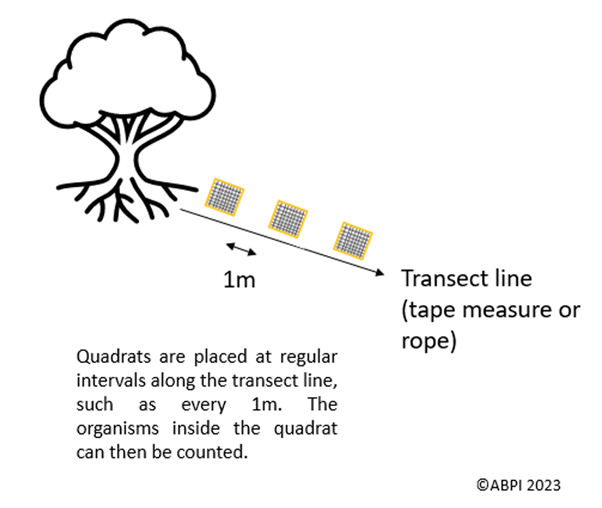This topic takes on average 55 minutes to read.
There are a number of interactive features in this resource:
 Biology
Biology
 Science
Science
Ecologists may want to count the number of organisms within a population to determine the impact of climate change. This is known as sampling.
Sampling helps ecologists to determine the abundance and distribution of species within an ecosystem.
Random sampling:
Quadrats are used to carry out random sampling. These are wooden or plastic squares of any size that are placed on the ground at random locations within a set area, allowing the number of organisms within the quadrat to be counted. The quadrat should be placed several times to allow valid results to be collected, providing a more representative picture of the whole population. Random number generation can also be used to make sure that sampling is random.
To perform random sampling, ecologists follow these steps:

The mean can be calculated:
An estimation of the total population size can be calculated:
Total population size = (Total area/Area sampled) x number of organisms in the sample
In the above example, the total area is 400m2 and the area sampled is 1m2. Say 350 daisies were counted in total. The population size would be:
(400m2 / 1m2) x 350 = 140,000 daisies.
This calculation is just an estimation. For a more reliable result, you can take a larger sample size (take more quadrat samples). This is especially important if you think that some areas are more/less densely populated than other areas.
Sampling along a transect:
Transects can be used to measure the number of organisms at intervals along a line. This technique is often used to assess the impact of abiotic factors such as light intensity, moisture levels and nutrient contents of the soil on a specific species. For example, if a transect line was placed from under a tree outwards, the light intensity, moisture and nutrients would all increase further away from the tree as the tree isn’t providing shelter or using the soil’s resources. Therefore, you would expect the number of organisms to increase too.
